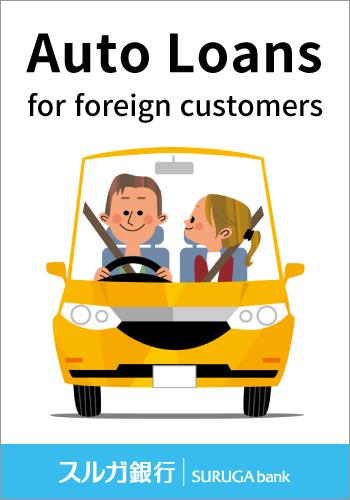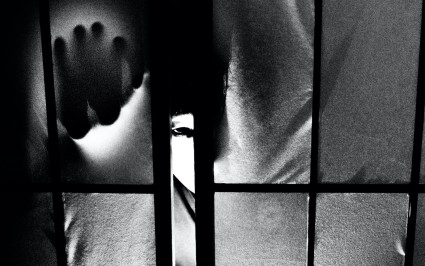For Jake Welch, getting dressed is one big math problem.
The 36-year-old brand director for an advertising firm calculates the cost-per-wear of his wardrobe by highlighting 200 items in a spreadsheet — excluding underwear and socks — and meticulously listing the price he paid for each of them as well as how many times he's worn it. He updates the spreadsheet every night on his computer to determine whether his purchases were worth it — or not.
Lots of people thought Welch was weird when he started doing this 12 years ago, opting to ditch the cheapest items on the sales rack in favor of maximizing the value of his purchases over the span of their lifecycles. But with inflation still a nagging problem, more shoppers are coming around to his way of thinking.
“I was actually onto something versus being a little looney," said Welch of Erda, Utah, who presented his findings last month at a company meeting.
Retailers are taking note of this mindset and shifting their marketing strategy in some cases. Gap’s Old Navy is offering shoppers a full refund for uniforms purchased during the upcoming back-to-school season if the clothes don’t hold up for a year. Retailers like Kohl’s and online shirt retailer Untuckit have recently revamped their marketing campaigns — particularly for the fall — to focus on durability and versatility. American Eagle is touting the “longevity of your most-loved jeans” made of recycled cotton and polyester in an email campaigns to customers.
That means a $200 classic sweater may end up being a better deal if you plan to wear it every week in comparison to a hot pink dress picked up for $40 that might be worn only once a month.
"Cost-per-wear is another way that they think about how to combat some of the inflation,” said Christie Raymond, Kohl’s chief marketing officer. "Is this item going to last? Is it going to really be versatile? For back to school, for example, can my child wear it in a number of different ways?"
Some shoppers are also looking to be more eco-friendly by buying clothes that don’t end up in a landfill after being worn a few times.
Still, the cost-per-wear calculation may only make sense for those consumers who can afford to prioritize quality and versatility over price. Neil Saunders, managing director of GlobalData Retail, notes that shoppers with tighter budgets will look at price and may not care whether something will last just as long as it looks good for now.
Indeed, fast-fashion purveyors are still faring well in the face of inflation. Chinese e-commerce retailer Temu, known for deep discounts and coupons, has continued its meteoric rise in the U.S., adding nearly 10 million new daily users since the turn of the year, according to market intelligence firm GWS. Meanwhile, Shein, the ultra-low-price, fast-fashion juggernaut founded in China, has been increasing its daily users from 3.1 million to 4.9 million daily users over the past year, according to GWS.
But there’s a growing backlash to the cheap stuff.
Rohan Deuskar, founder and CEO of Stylitics, a retail technology firm that powers personalized styling, outfitting and bundling suggestions for 150 retailers online, said he started seeing the trend this past holiday shopping season. He noted the average order was going up, particularly for holiday dresses, while shoppers were buying fewer items. And shoppers were also spending more time engaging with the virtual models that showed different ways to wear the item.
“Shoppers are being more considerate about every purchase and being willing to spend only if they get value — and that no longer just means cheap,“ Deuskar said. ”We’re reaching a little bit of an oversaturation of buying a bunch of stuff. ”
According to market research firm Circana’s Retail Tracking Service, higher prices are outpacing lower prices over the past 12-month period ending in June. Women’s dresses priced $200 and above grew about twice as fast as those priced under $50. Sales of men’s jeans that were less than $30 declined, while higher price brands drove growth. Sales of women’s jeans priced $150 and above increased by 7%. And while the market for women’s active pants declined 20%, women’s active pants priced between $125 to $150 increased 19%, according to Circana.
Saunders notes that “price and quality aren't always linked." In fact, some retailers may be using any excuse to sell higher price goods. There's also the timeliness of the fashion item to consider. Shoppers may think about longevity when they look for a coat but not for a skirt or a top.
“People like to refresh or their tastes change,” he said.
And cost-per-wear calculations don't factor in weight loss or gain, Saunders added.
Welch said his wardrobe consists of mostly blacks, greys and blues and items that can carry through multiple seasons. Higher inflation has helped him better separate his needs and wants.
“I ask myself a little bit harder: ‘Is it something that I absolutely need?’” he said. “Consulting my spreadsheet, how many golf shorts do I really have?”
Welch noted that his formal wear and suits along with dress shirts are among the items that rank the highest in cost-per-wear. He chose a charcoal suit — not a tan version — for his wedding in 2018 that he bought for $480 at Bonobos. He has worn it 44 times, resulting in a cost-per-wear of $10.91. Not too bad but ideally he likes to get it down to 50 cents per wear, like the athletic shorts he bought at Outdoor Voices for $20 and has worn 434 times, according to his spreadsheet he shared.
Kohl's said its marketing campaigns are showing different ways that items can be worn. For example, on the department store's Instagram account, it pairs a white T-shirt and denim shirts in different ways, including a beachy take and a more stylish approach with hoop earrings. Untuckit's fall campaign, “Made for the next journey,” focuses on the different ways customers can wear the shirt or the jacket — taking it from the office to night time events.
As for Welch, he said his wife is now staying away from fast-fashion and focusing on quality, though she's not embracing the spreadsheets. And he's delighted that his two girls, ages 3 and seven months, fit with the new math.
“With my first daughter, the cost for use on her dresses and stuff like that have decreased with having another girl, ” he said. “So if we have a boy, great. But if we have another girl, that's just even more savings."
© Copyright 2023 The Associated Press. All rights reserved. This material may not be published, broadcast, rewritten or redistributed without permission.















14 Comments
Login to comment
TrevorPeace
Just bought two pair. Both good North American brands, and they cost a total of $70. What's the big deal? Designer crap? Not me. Jeans are jeans. Cheap, long-lasting denim pants. Nothing more, nothing less.
kurisupisu
Clothes are a waste of money
In the heat and humidity there is not much point in wearing anything other than a pair of shorts
wallace
I wonder how much I've spent on jeans over 50 years.
theFu
When jeans wear out, they can be made into nice, thick, large, picnic blankets so you don't have to sit on the grass with the insects.
In winter, I wear jeans almost every day, if leaving the house. In summer, it is shorts. Generally, I wear a suit for funerals and weddings, only, so about once every 5 yrs.
I used to have a job that required a coat, tie, slacks. Ended that in the 1990s. I still have those expensive wool slacks and some day I'll fit into them again .... someday.
I must say, I'm shocked at how expensive Levi's are outside the USA. Think the most I've ever paid is $45 and that was because I couldn't wait for a sale. Usually they are under $25. Seeing them for $120+ when traveling makes me think I should bring some with me to create a fund for trip alcohol by selling them. Levi's last for a decade, at least. Just be careful to look over the quality of the stitching. The last 20 yrs, Levi quality has really become hit-or-miss.
Haven't worn any other brand of jeans since I was about 12 yrs old. Jeans are part of the casual dress here. Put on a nice shirt and a sports coat and you can go almost anywhere, assuming your shoes are nice enough.
Levi's are heavier than other brands, so they aren't as comfortable in warmer climates. Wangler and Lee are the other main US brands that use lighter denim for more comfort. I know a bunch of pseud-cowboys who only wear Wranglers. Think Lee and Wrangler are owned by the same parent company.
yokohamarides
Uniqlo jeans are horrible in this regard. They fade and fall apart very quickly.
Jimizo
?
I can’t imagine the police will accept that reasoning if you are sitting on the train starkers.
The regular ones are a bit heavy but I bought a pair of Levi’s light jeans for summer for about ¥10,000 in Japan about 3 years ago. Good quality. It’s worth paying a bit more for the durability.
Garthgoyle
I have two pairs of jeans I bought from H&M about 3 years ago. The pockets started tearing down and I fixed them. So they probably last another two years.
Just got a pair of Under Armour trekking shoes I use everyday, after the previous ones got a hole on the sole.
I just buy what I need I use it till it nearly falls apart. But then again, I don't have a lot of money.
La vie douce
The guy in the photo has too much free time it seems, lol.
GW
Sad reality is stores like uniqlo etc are basically just selling GARBAGE, their stuff ends up in the trash real quick most of the time.
Japan is great for denim goods, lots of brands selling top notch stuff with denim in 15-25oz that LAST, costly but over time are worth it. You can even by MIJ levis that are much better then regular levis etc which are actually not that great anymore.
Same applies to other non clothing items, its scary how much stuff we buy that quickly ends up in the trash, needs to be reversed for sure!
Speed
What a waste of time. I generally estimate how long something should last but would never spend my time daily doing the above.
I have two Uniqlo flannel shirts that've lasted 27 years and a jacket for over 20. Then, I have some clothes that have lasted just a few years as expected. That's enough information for me.
wallace
I buy American jeans, authentic ones like Levi's.
I have some more than 20 years old.
CuteUsagi
Uniclo colored anything fades. Black pants turn to a glowing deep brown around the thighs. Weird.
In hot weather at home, nude is best.
At least in Japan if you buy any brand of Jeans they adjust the length for free. Cannot ever find my waist and length to match anywhere in Hawaii.
Invalid CSRF
Yrral
You can buy a good pair of jeans at Walmart for less than 15 dollars,but I only found one pair that I wanted in my sizes
3RENSHO
'Jiipan' blue jeans are completely unsuited to the heat and humidity of Japan; ergo, I have none...